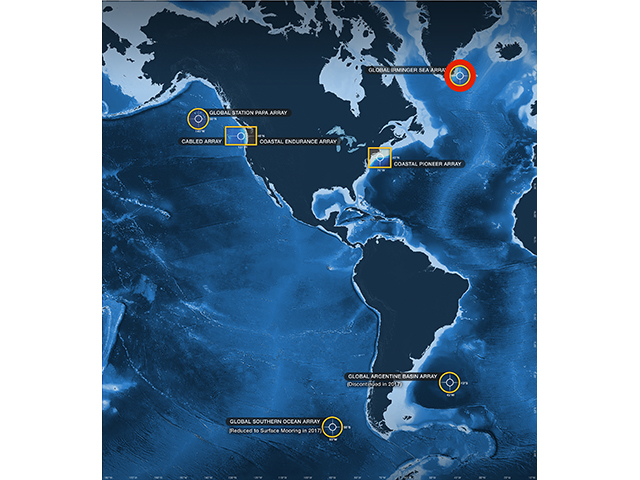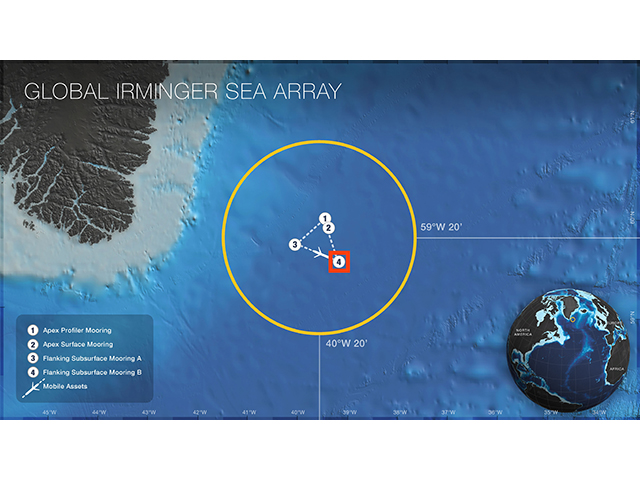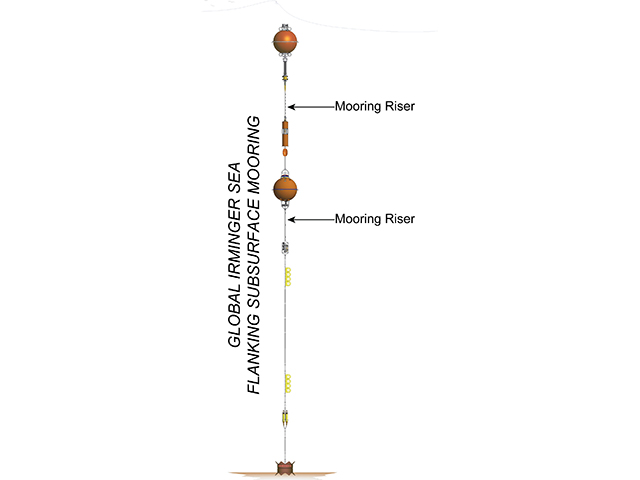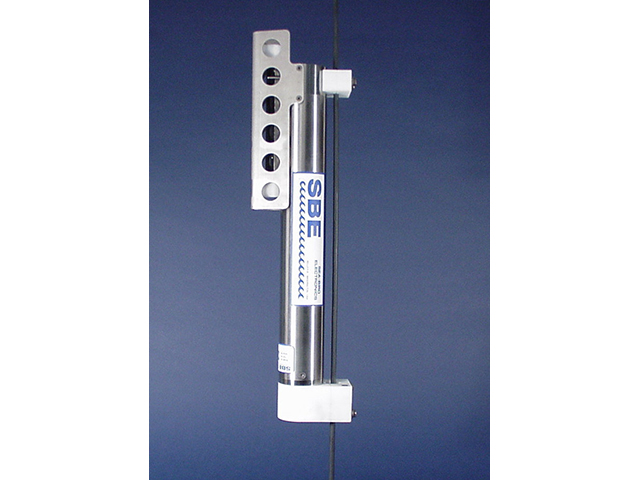Seasonal Variability In The Mixed Layer Application2
Your Objective
Look for patterns in primary productivity in the surface of the North Atlantic Ocean (specifically at the Irminger Sea Array), and relate those patterns to seasonal mixed layer dynamics.
Specify temperature depths to plot:
Data Tips
The plots above show wind, solar irradiance and water temperature (at various depths) data for a multi-year period from the Irminger Sea Array in the North Atlantic Ocean. Specifically we are using surface meteorological data from the ECMWF reanalysis model, and CTD data from Flanking Mooring B. You can interact with these data by:
- Turning on and off water temperature time-series from different depths (surface, mid, deep)
- Zooming in and out of the data to look at different time scales that interest you by changing the width of the highlighted section of the bottom graph
- Hovering over data points to show data values for a specific time
- Hovering over the temperature timeseries to show the corresponding depth profile plot to the right.
Additionally, the bottom plot show Chlorophyl-A Concentration measured at 30m depth from a nearby mooring. Chlorophyll-A Concentration can be used as a proxy for primary productivity.
Questions for Thought
- What did you find interesting about what you observed in the data about chlorophyll-a concentration from near the Polar Zones in the Ocean?
- Did you observe any patterns? If so, what were the patterns and for which variables?
- During what time of year is solar radiation the highest?
- During what time of year is the mixed layer depth the shallowest?
- What questions do you still have about chlorophyll-a concentration from near the Polar Zones in the Ocean?
- How does the chlorophyll-a concentration vary over time near the Polar Zones of the Ocean?
- Does there seem to be a connection to mixing processes/mixed layer depth at this site?
- Does this align with your understanding on the limitations of primary production?
Background Information
Click on the images below to learn more about where and how the dataset above was collected.
What is stratification?
What is solar irradiance?
What is the Mixed Layer Depth (MLD)?
This is the depth of mixing in the surface ocean that results in a uniform temperature as you move down in the water column from the surface. The mixed layer depth can be identified by looking for the depth range of the surface ocean where temperature is relatively constant (above the thermocline). This constant temperature indicates active mixing processes are at work.
The MLD is determined by physical processes such as wind and water density (controlled by temperature and salinity). At this site the major driver of variations in water density are the large temperature variations that happen between winter and summer temperature during the winter months, while a combination of salinity and temperature drive water density during the summer months.
For this data lab we are viewing these mixed layer dynamics as being a fairly simple function of mechanical wind mixing and energy transfer at the surface (we ignore the impact of salinity). There are other factors, but we are keeping it simple.
What is primary production?
Primary production refers here to the process by which phytoplankton in the surface ocean use light from the sun to convert carbon from dissolved carbon dioxide to sugars for cellular growth. Primary production can not be measured directly, but Chlorophyll-a concentrations in the water are measured by instruments and are a "proxy" for estimates of primary production.
Dataset Information
The CTD data for this activity was obtained from the instruments deployed at Irminger Sea Flanking Mooring B.
Because the timeseries for the global Surface Moorings at each array is rather gappy, due to harsh weather conditions and instrument failures, we used the ERA5 Reanalysis Model from ECMWF to provide sea surface temperatures (0m), wind speed and irradiance data for each mooring.
Recovered datasets for each CTD (from 30m to 1,000m) were downloaded from the OOI data portal, cleaned, and then daily (mean) averaged, before being combined with the model reanalysis dataset and averaged again into weekly values in order to showcase seasonal cycles instead of daily variabilty.
For this activity, we also included chlorophyll-a data, as measured by the Fluorometers on both Flanking Moorings, primarily GI03FLMA-RIS01-05-FLORTD000.
To calculate the estimated Mixed-Layer Depth for each time step, we interpolated the measured temperature profile and then found the depth that was 0.5°C less than the surface temperature.
See this Jupyter Notebook for details on how the data for this activity was processed.
Activity Citation: Eveleth, R., Lemkau, K., Miller, I., Smith, S., & Lichtenwalner, C. S. (2020). Seasonal Variability In The Mixed Layer. OOI Data Labs Collection.



